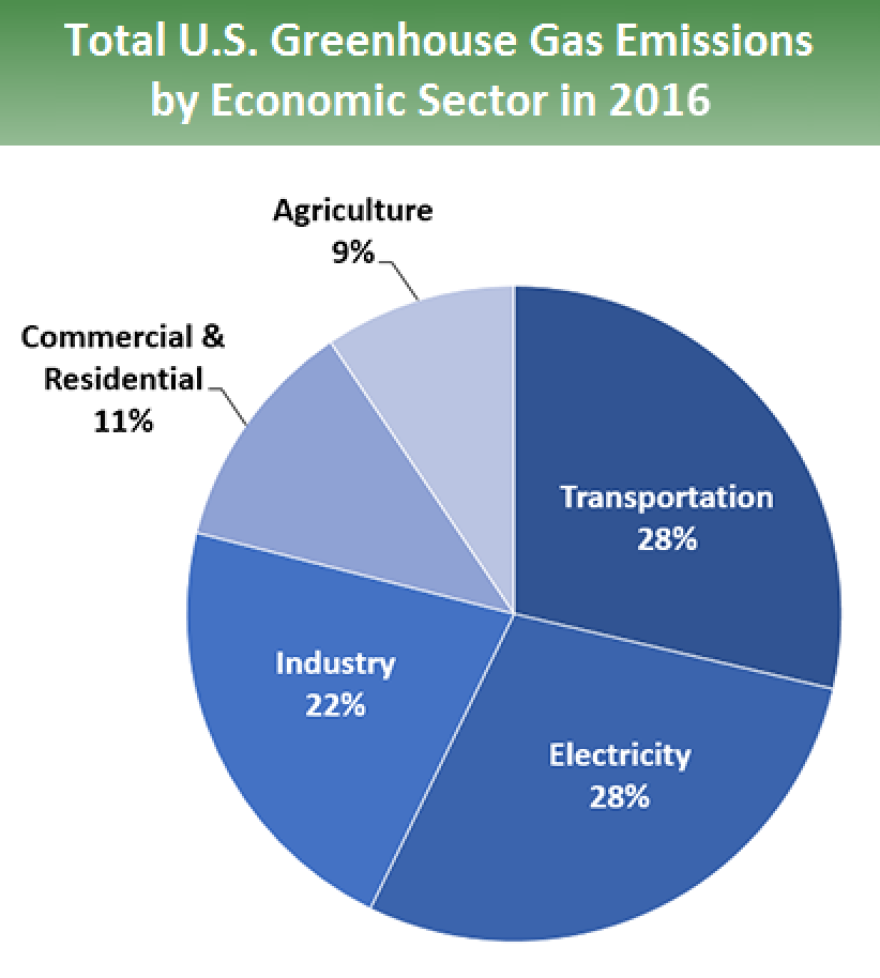A recent report commissioned by the United Nations predicts dramatic consequences if greenhouse gas emissions continue at current rates. So, what can you, as an individual, do about climate change?
Tia Nelson, managing director of climate at the Outrider Foundation, shares some tips on what you can do to help offset climate change. She believes it's essential that humans pursue every available climate solution to avoid human-caused warming.
"This report should serve as a wake-up call to everyone that we have a lot of work and it's going to require a sustained concerted effort on the part of all of us to abate these risks and meet this challenge," Nelson says.
Examine Your Own Carbon Footprint
The term carbon footprint refers to the sum of all the greenhouse gas emission an individual or a household generates. Here's a few to consider:
FOOD WASTE
The average American family of four throws away $2,000-worth of food a year. Across the United States, up to 40 percent of food produced is discarded.
The issue is even more complicated because where and how our food is produced, prepared and consumed contribute to greenhouse gas emissions.
If you purchase wisely and compost what you don't consume, the leftovers or food waste can be converted into a useful soil amendment.

SINGLE-USE PLASTIC
Plastic that's intended to only be used once — plastic bags, straws, coffee stirrers, soda and water bottles, and most food packaging — is a significant source of greenhouse gas emissions.
“We can make a choice to avoid those purchases whenever possible,” Nelson says.
SMART THERMOSTAT
Getting a smart thermostat can increase energy savings. Smart thermostats allow you to adjust home heating and/or cooling with internet-connected devices, such as a smartphone.
Why does it matter? Worldwide, buildings account for 32 percent of energy use and 19 percent of energy-related greenhouse emissions. Making your dwelling more energy efficient helps drive down those emissions.

TRANSPORTATION: Walk, bike or take public transportation rather than drive to work when possible.
According to the EPA, the transportation sector generates the largest share of greenhouse gas emission — primarily from burning fossil fuel for our cars, trucks, ships, trains and planes. Over 90 percent of the fuel used is petroleum based, which includes gasoline and diesel.
More Resources
If you want to learn more about climate change, how greenhouse gas contributes to it and other steps you can take to combat it, here are just a few resources you can tap into.
Project Drawdown outlines and ranks solutions to reduce greenhouse gases.
“Nobody’s ever done a project that this before, and it’s a source of great inspiration to me,” Nelson says.
Citizens’ Climate Lobby
“A bipartisan coalition of citizens working in every congressional district in the country, building bipartisan support for rational clean energy policies, that create jobs, protect the environment and abate the threat of climate change,” Nelson says.
State Policy Opportunity Tracker
"It assesses every state's investments in renewable energy, conservation and efficiency — all of the policies that are relevant to this question are listed along with the elected officials and the energy mix of every state," Nelson says.
Have an environmental question you'd like WUWM's Susan Bence to investigate? Submit below.
_







